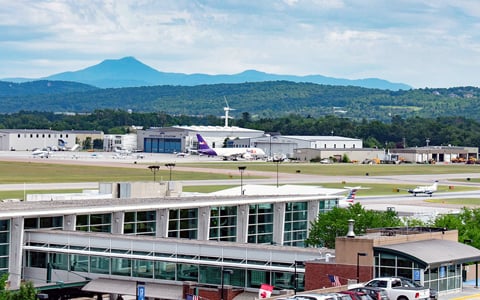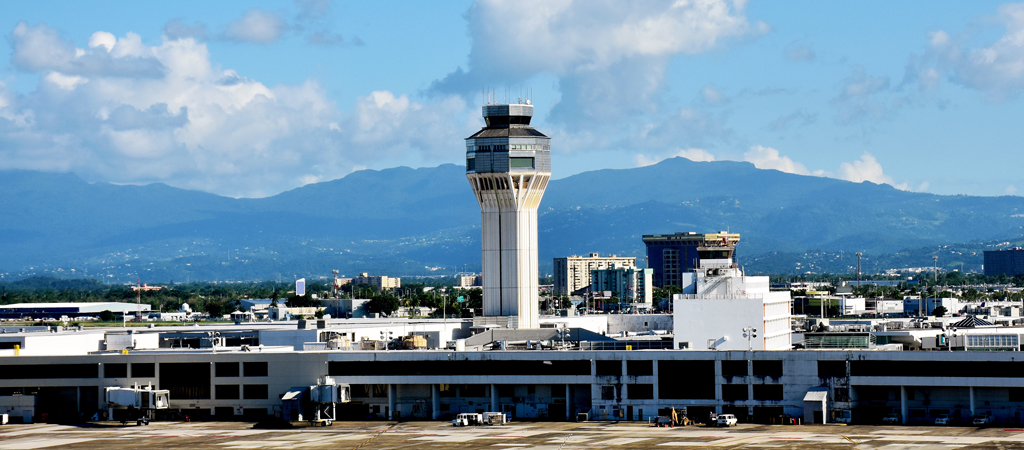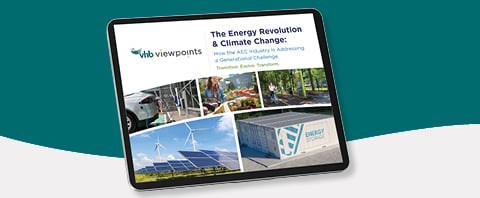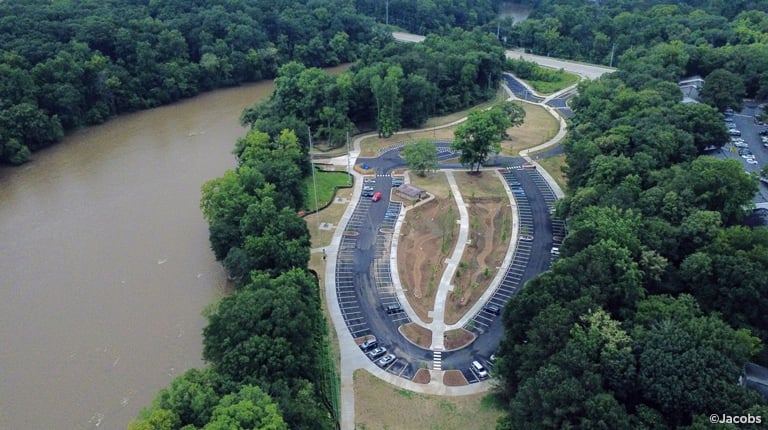
With a growing focus on sustainable aviation, airports are addressing carbon emissions, coastal resilience, and zero waste. Airport authorities are united in their efforts to implement a holistic approach to airport sustainability, one that considers environmental, social, and economic impacts.
Viewing an airport through a sustainability lens provides a framework to address an increasingly complex and competitive aviation industry in a manner that reflects individual airports’ needs. Airports are finding that sustainability makes good business sense and builds strong relationships with the traveling public, tenants, neighbors, and regulators. By adopting sustainable practices, airports can save money while improving operational efficiency, protecting the environment, enhancing the airport user experience, supporting employees, and stimulating economic growth.
“I’m struck by how mainstream sustainability is in the aviation industry,” said VHB’s Regional Aviation Director, Carol Lurie, in a recent ENR podcast. “Ten or fifteen years ago there was some skepticism, but now it’s front and center. Airports are making commitments to net zero greenhouse gas emissions, facilities are becoming more sustainable, everybody’s thinking about reducing energy and zero waste practices.”
Airport sustainability is a major focus for the Federal Aviation Administration’s (FAA) whose guidance for sustainability and sustainable master plans is modeled on two of VHB’s early sustainability planning efforts. By making significant strides in assessing operations and developing a plan that supports making responsible and sustainable business decisions, operations will become more efficient, and airports can add value to their communities.
Four current VHB aviation projects that are focused on sustainability include:
Tucson Airport Authority (TAA), Arizona: Sustainability Study and Sustainability Management Plan
Planning, development, and construction will be a major focus of TAA in the coming years. Accordingly, opportunities for sustainable land use, green construction practices, financial sustainability, sustainable contracting and procurement, and resilient design can be incorporated into its future strategy.
The VHB Team recently partnered with the TAA at the Tucson International Airport to prepare a Sustainability Study and Sustainability Management Plan. The objective is to establish performance baselines that will inform the setting of goals, key performance indicators (KPIs), and performance targets, as well as to establish issues and opportunities that TAA can address through sustainability strategies. The Plan will be comprised of future-looking goals, performance targets and related metrics, strategies, an implementation plan, and recommendations for continuous improvement. Specific strategies to be explored include policies and programs, projects, partnerships, and education and outreach.
Through the implementation schedule, VHB is identifying each phase of the sustainability strategy. The implementation plan will summarize the priority strategies, including implementation steps, roles and responsibilities, potential partnerships, and potential funding mechanisms. To assist tracking and reporting, the VHB Team is developing a web-based dashboard to track sustainability performance that TAA can use after the Sustainability Management Plan is completed.
Philadelphia International Airport (PHL), Pennsylvania: Climate Resilience
The PHL property is low-lying and positioned between three tidally and riverine influenced waterbodies: the Delaware River, the Schuylkill River, and Darby Creek, making the area vulnerable to climate change impacts. To evaluate climate change impacts and flooding from these waterbodies during severe storm events, PHL partnered with VHB to perform a macro-scale hydrologic and hydraulic (H&H) resiliency study of the airport. VHB used innovative H&H modeling to simulate future climate flood events and evaluate flood mitigation alternatives.
By highlighting climate projections, modeling visualizations, flood mitigation benefits, and next steps, the airport can proactively prepare for climate change and begin charting a responsible course for future decisions that benefit the airport, the community, and the environment.
Luis Muñoz Marín International Airport (SJU), Puerto Rico: Future Framework

AEROSTAR, the company that operates the facilities at the Puerto Rico Port Authority-owned SJU, was interested in the development of an Airport Sustainability Plan (ASP) to provide a framework to integrate sustainable and resilient practices into planning, design, construction, operations, and maintenance activities at SJU. The company wanted the ASP to also cover recommendations for tenant facilities.
By engaging stakeholders, conducting interviews, and analyzing data, VHB is working with the team at AEROSTAR to define sustainability categories and to develop a first draft of sustainability goals and objectives. The intent is to have a framework that will define AEROSTAR’s commitment to sustainability.
Working collaboratively with AEROSTAR, VHB is preparing a sustainability plan to put in place and monitor sustainable strategies using metrics to document progress and develop methods for tracking progress towards achieving goals and targets.
By developing high level goals for each of the sustainability categories, performance targets are measurable and specifically designed to help the SJU achieve each goal. This combination of high-level goals and more specific quantifiable targets will give the airport the flexibility to adjust targets to meet goals in changing circumstances.
Burlington International Airport (BTV), Vermont: GHG Emissions Inventory
Owned by the City of Burlington, Vermont, BTV is striving to develop a program that will make the airport among the most sustainable in the nation. By understanding its existing performance, continuing to document and report on the sustainability strategies it has implemented or is currently undertaking, and identifying new and cutting-edge strategies, the airport wants to develop a set of ambitious yet reachable sustainability goals and performance targets. To this end, VHB is developing a Sustainability Management Plan with a focus on early and high impact actions.
One of the key components of this Sustainability Management Plan will be developing an understanding of the emissions generated at the BTV by the airport operator and its partners. By using the Airport Carbon and Emissions Reporting Tool (ACERT), VHB is coordinating the collection of necessary data and preparing a detailed GHG emissions inventory for BTV consistent with the Airport Carbon Accreditation program.
VHB shares our airport clients’ dedication to creating a more sustainable and resilient future. We understand the increasing urgency association with investment in climate solutions, and that it requires collaboration and partnerships across industries, markets, and sectors. VHB is committed to a clean energy future and advancing renewable energy solutions. Visit our aviation page to learn more about our services.



